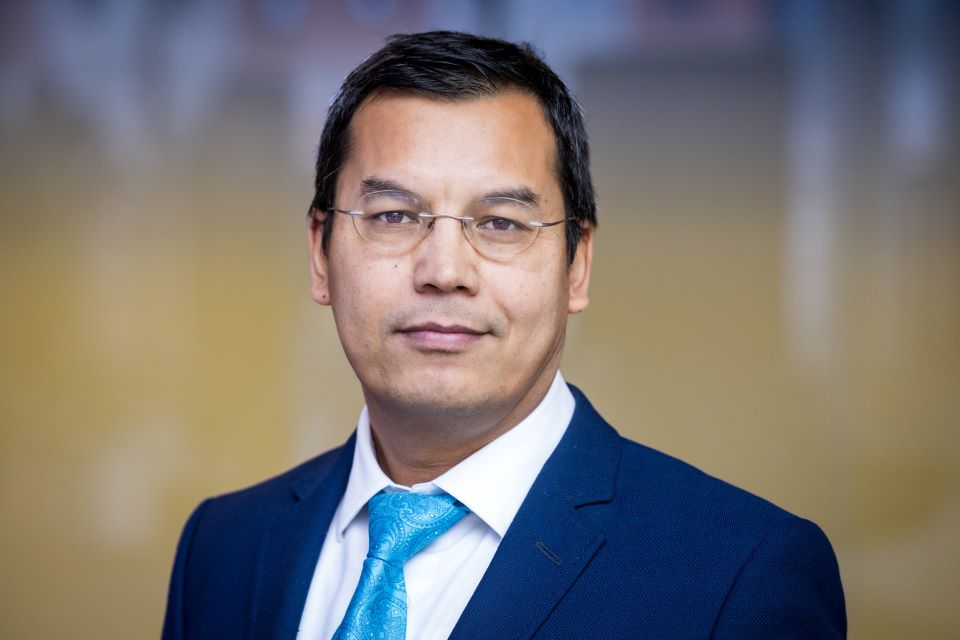Saint Louis University Receives $1 Million NGA Grant to Establish Midwestern Satellite Calibration Network
Maggie Rotermund
Senior Media Relations Specialist
maggie.rotermund@slu.edu
314-977-8018
Reserved for members of the media.
The Midwestern calibration network will stretch across Missouri, Illinois and Arkansas and will be critical to satellite systems and global studies.
ST. LOUIS — Earthquake fault lines. Abandoned mines. Transportation infrastructure. Dams and Levees. Location of Goods and Supplies. Government agencies, researchers and public entities rely on geospatial technology to locate existing geographic features, build new infrastructure, and monitor changes in the environment.
Saint Louis University has received a $1 million grant from the National Geospatial-Intelligence Agency (NGA) to create a satellite calibration network to improve the accuracy of satellite observations and the geospatial tools used to monitor global change, infrastructure resilience, and natural disasters such as landslides, volcanic eruptions, and flooding.

The funds will be allocated over two years through the NGA’s Geomatics Emerging Scientist Consortium for Education, Research, and Capabilities Enhancement (GEO-ESCON), a group of universities focused on advancing tradecraft and capacity around geomatics, the scientific discipline of gathering and processing spatially referenced information about the Earth.
The project, “Developing global InSAR solutions for change detections with enhanced regional calibration,” is led by Vasit Sagan, Ph.D., deputy director of Taylor Geospatial Institute (TGI) and associate vice president for geospatial science at Saint Louis University. Jeremy Maurer of Missouri University of Science and Technology and Jackson Cothren of the University of Arkansas are co-principal investigators.
The project will develop an absolute accuracy model for Interferometric Synthetic Aperture Radar (InSAR) to characterize the accuracy of global InSAR deformation models. InSAR is a technique for mapping ground deformation using radar images collected from orbiting satellites.
Specifically, the project aims to:
- Investigate how uncertainty changes over spatial and temporal scales with specific applications in levee monitoring, landslide prediction, and risks to man-made infrastructure.
- Determine how accuracy deteriorates proportionally to the distance from ground control points established along sites in Missouri and Arkansas.
Sagan said satellite precision is vital, citing the placement of levees or other infrastructure projects, such as roads, that could be built over unstable ground.
“A transportation project could be using InSAR to view areas in Illinois where there used to be mines centuries ago. These mined-out areas can shift over time as the ground moves, causing sinkholes and other issues,” Sagan said. “In these cases, we need precision on a very fine scale. You want to be able to see a levee, a dam, or airport runways move 1 centimeter or judge the exact size of a sinkhole.”
The grant will also fund the establishment of satellite calibration sites across the Midwest. Sagan said there are similar calibration sites in other countries and regions of the U.S., but none in the Midwest.
“This network of calibration sites equipped with GPS stations, corner reflectors, and other targets is unique,” Sagan said. “We will be able to collect data points and correct measurement errors. Every entity, company or government agency in the satellite business needs to have their data corrected and calibrated against ground targets from time to time.”
The network of sites will start in St. Louis, Rolla and Fayetteville.
“It creates the ideal real-world laboratory for measuring and modeling the precision and absolute accuracy of satellite monitoring,” Sagan said. “This is a very exciting project which enables research in various other scientific fields for years to come.”
Taylor Geospatial Institute
The Saint Louis University-led TGI consortium also includes the Donald Danforth Plant Science Center, Harris-Stowe State University, University of Illinois Urbana-Champaign, Missouri University of Science & Technology, University of Missouri-Columbia, University of Missouri-St. Louis, and Washington University in St. Louis. Collectively, these institutions encompass more than 5,000 faculty and 100,000 students.
TGI aims to advance geospatial science through multi-institutional, interdisciplinary collaborations to create innovative, real-world solutions to grand societal challenges. It supports a collaborative research and training environment and while shaping the future of geospatial science in the U.S.
Saint Louis University
Founded in 1818, Saint Louis University is one of the nation’s oldest and most prestigious Catholic institutions. Rooted in Jesuit values and its pioneering history as the first university west of the Mississippi River, SLU offers more than 13,500 students a rigorous, transformative education of the whole person. At the core of the University’s diverse community of scholars is SLU’s service-focused mission, which challenges and prepares students to make the world a better, more just place.

















